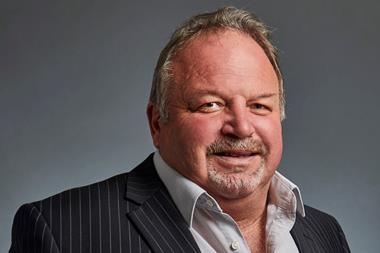Brokers cannot be the ‘Father Christmas’ of low premiums amid inflation and supply chain squeezes, yet they can be the ‘antidote’ to underinsurance
With the Bank of England predicting that inflation in the UK could reach 10% in the coming months, there are growing fears amid the insurance industry that this incline will lead to an underinsurance crisis which will leave millions of businesses and individuals with insurance coverages that do not match the value of the assets they are designed to protect.
Research from the Chartered Institute of Loss Adjusters and Biba, published in 2018, estimated that underinsurance was present in around 40% of all claims that year - the degree of underinsurance was approximately 35% to 45%.
Plus, based on statistics published by Aon in May 2022, the broker noted that up until the end of 2020, where businesses had undertaken reinstatement valuations for buildings, or worked out what it would cost them to rebuild a property from scratch, more than 90% of these buildings were originally underinsured by more than 10%. The average amount of underinsurance was 41%.

Furthermore, Aon found that for plant and machinery, over 75% of businesses were underinsured by more than 10%, with the average level of underinsurance sitting at 48%.
The rising costs of raw materials have been exacerbated by a number of factors hitting global supply chains – including Brexit, the Covid-19 pandemic and the conflict in Ukraine.
These events have not only pushed up the price of materials, but have also caused huge backlogs in the ability of supply chains to deliver to the UK from around the world.
In turn, this has created new risks for policyholders around the length of indemnity they require for the restoration of their property, or the resumption of their operations in the event of a business interruption (BI) claim.
Peter Blanc, group chief executive of Aston Lark and president of the Chartered Insurance Institute, said that inflation-driven underinsurance is now the most dominant challenge for brokers and their clients.
“Underinsurance is a massive issue for us and it should be a focus for every broker at present,” he explained. “Policies are taken out annually and if you are due to renew now, the changes over the past 12 months have been huge.
“While inflation has [already recently] risen, it is likely [that] it will continue to rise in the months ahead. If you are a business, your turnover may have risen in the past 12 months and your costs have also increased dramatically.”
Blanc added that supply chain issues and the rising costs of materials have had knock-on effects that need to be considered.
He continued: “Take a small factory, for example, which has suffered considerable damage. How long will it take to replace the machinery lost?
“Given the pressure the supply chain is under, replacing machinery within 12 months is no longer possible. Companies are facing a wait of 18 months or more for replacements. They may have a business interruption indemnity of 12 months. It is not long enough given the current stress on claims and restoration.
“We are now recommending to our clients that they need at least a two-year BI indemnity period.”
The ‘antidote’ to underinsurance
The broader insurance market has been quick to review how underinsurance can be tackled in today’s economic climate.
For example, trade body Biba and insurer Allianz published updated guidance in May 2022 highlighting the threat of underinsurance – this was launched at Biba’s annual conference in Manchester.
Read: Briefing - Inflation to test industry and clients alike
Read: Adam Winslow - Managing inflation means separating commercial lines from personal lines
Read: Property claims inflation and digital support tools will continue to impact claims sector in 2022
Alastair Blundell, head of general insurance at Biba, told Insurance Times that brokers have a key role to play as the “antidote” to underinsurance because they can guide clients through the insurance buying process to ensure that all values and cover levels are correct.
This is especially pertinent following Covid-driven business operation changes and amid rising prices for both utilities and materials.
He explained: “Prior to the pandemic, we estimated that around 20% of claims had a degree of underinsurance. That figure has risen considerably and, unfortunately, it is likely to get worse before it gets better.”
“Inflation is playing a part on the costs of rebuilding and reinstation. We are also seeing clients increasing the gaps between the revaluation of their assets at a time when supply chain issues are increasing costs.
“Biba has been worried for some time around the impact of [the] supply chain in the supply of materials. As such, our view is that indemnity periods need to be raised from 12 to 24 months, to ensure that there is adequate time for any work to be completed.
“Brokers need to work with clients to ensure they have the right values [insured] and – [bearing in mind] the way Covid has forced firms to change how they operate – [that] there are no gaps in cover.
“Many firms have moved to [an] online operation, but do they have the necessary cyber cover?”
“We are concerned that insureds are reluctant to increase values or take the additional cover they need as a way of managing premiums. It is a huge false economy.
“Brokers are and can be the antidote to the problem if they work with their clients to ensure they understand the need to have the right cover in place
Nick Hobbs, chief distribution and regions officer at Allianz Commercial, added: “This topic resonates with us. Our own 2022 survey of SMEs revealed practices that would leave businesses without sufficient cover in the event of a relevant loss, so we are committed to working with Biba to reduce that potential.

“We want customers to secure the exact levels of cover they need – and it’s our broker partners [that] provide them with that crucial guidance, the absence of which [often] reveals itself too late.”
Not acting like ‘Father Christmas’
Blanc said the continued threat of inflation has made underinsurance a continually movable challenge.
“You have to factor in future inflation into any values you put into a policy,” he explained. “We have told our clients to take a very conservative view on values. We expect that in the course of the policy there may well be [a] 10% to 15% gap between values at inception and at renewal.”
He added that despite the national media attention around the increased cost of living and inflation rises, brokers are having to be proactive in discussing underinsurance risks and solutions with clients.
“Given the pressure on the cost of living and the economy, a lot of our clients will continue to look straight at the bottom line of the policy proposal – the cost,” said Blanc. “If the cost has increased, they want to do something about it.
“At present, brokers need to work with clients to ensure they understand that we have to get the policy, coverage and values right - then we can look at the premiums.
“The current environment provides brokers with the opportunity to prove the value they bring to the client. Sometimes that involves telling the clients things they do not want to hear.
“We cannot be seen as some kind of Father Christmas providing products at ever lower premiums.
“We are there to ensure our clients understand the risks and the steps they need to take to protect themselves.”
Hosted by comedian and actor Tom Allen, 34 Gold, 23 Silver and 22 Bronze awards were handed out across an amazing 34 categories recognising brilliance and innovation right across the breadth of UK general insurance.




















































No comments yet